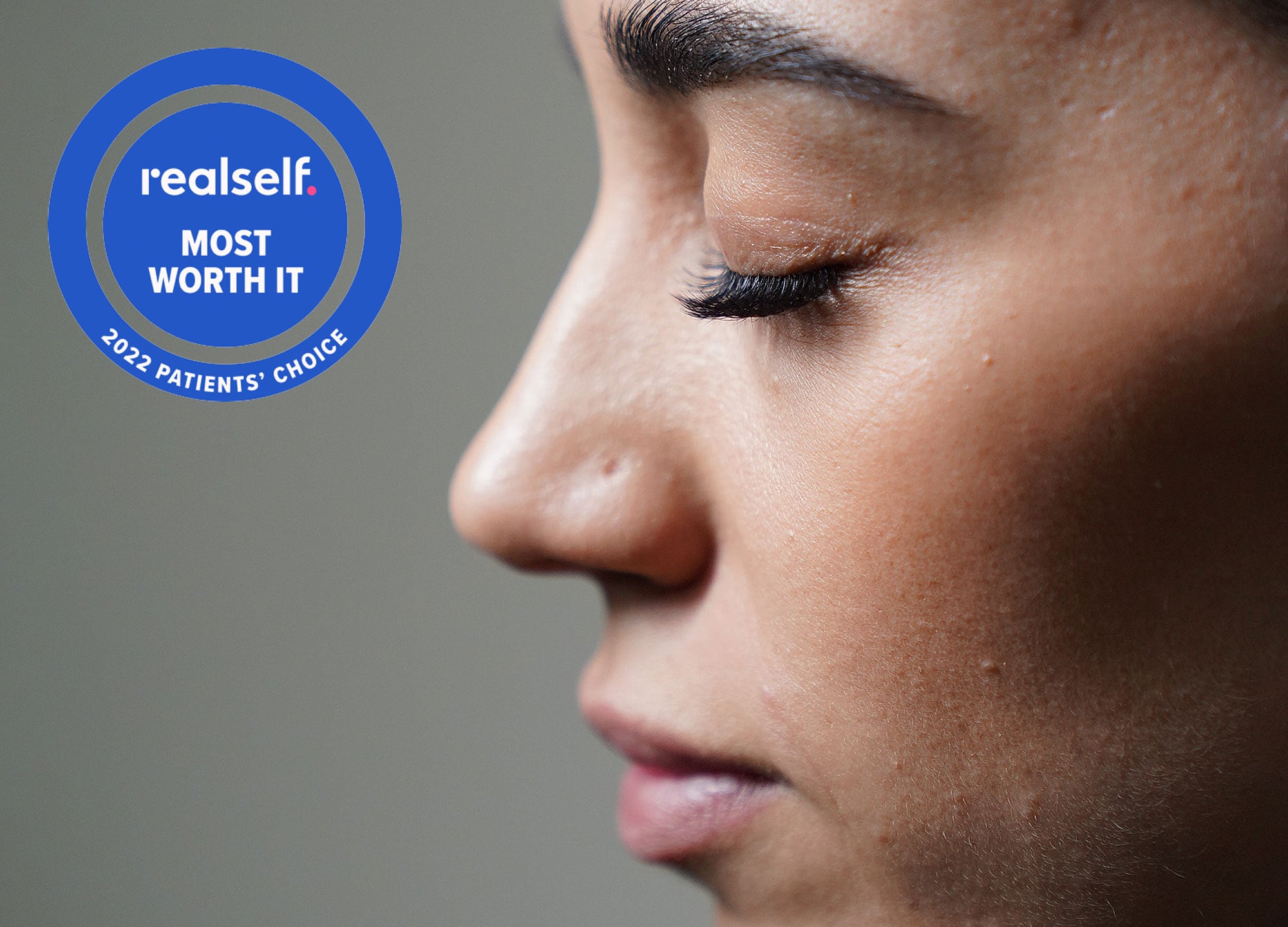Rhinoplasty has become one of the most popular surgical procedures in recent years, and its patient base skews uniquely young—think teenagers. That might make it seem like a straightforward procedure, and while that can be the case, its recovery period is more in-depth (not to mention longer) than one might gather from a seconds-long TikTok montage.
“The recovery period for surgical rhinoplasty varies, depending on the type of surgery performed,” says board-certified Beverly Hills, California, facial plastic surgeon Dr. Deepak Raj Dugar. “On average, [it] can take anywhere between 6 and 12 weeks for general swelling and inflammation to come down.” Then, he adds, 6 to 12 months for the micro-swelling to subside and results to fully show.
Not surprisingly, most post-op recommendations are intended to reduce that inflammation, which can happen at a different pace for each patient, says board-certified New York City facial plastic surgeon Dr. Dara Liotta. “The very last place for swelling to resolve is around the tip of the nose,” she says. “In patients with thicker skin or in the case of revision rhinoplasty, it may actually take up to two years to see all the definition around that area.”
With that in mind, here’s what to avoid in the days and weeks following rhinoplasty, to ensure the best possible results.
1. Don’t ice your nose
While icing your nose might be an obvious way to reduce general swelling, it actually should be avoided following your surgery—a recommendation that usually surprises patients. “Icing in the first 48 hours contracts the blood vessels and lessens the amount of bruising and swelling that develops,” says Dr. Liotta, who recommends icing the nose for 20 minutes of each hour (only while you’re awake) during that time. “After 48 hours, however, once swelling and bruising are established, we actually want the blood vessels to deliver blood to the area to help ‘clean up’ the bruising.” In fact, applying ice to your nose after that time period will actually make bruising and swelling last longer.
2. Don’t wear your glasses
Glasses pose a unique dilemma, as they may be a necessary part of life for both nearsighted and farsighted people. The issue: “Glasses sit on the bridge of the nose and can cause an alteration in the soft tissue swelling during the acute healing period,” Dr. Dugar explains. He recommends avoiding them or, if that’s not possible, using an optic bridge, which is a device that supports the glasses using the cheeks rather than the bridge of the nose.
3. Don’t go for a run
While contact sports, like a game of basketball, are off limits for obvious reasons (in the event ball meets nose), there are other, less-expected types of exercise that should also be avoided. For running, jogging, or anything that involves jumping, “the impact with the ground will naturally go to the most mobile portion of your body—which, during your post-acute healing, would be your nose,” says Dr. Dugar. That could inadvertently shift or mobilize the nasal bones, changing the final appearance of the nose. He recommends refraining for six weeks, until the nose has healed enough that there’s a low risk of injury. The good news? “Walking on an incline treadmill, riding a bike, or doing a Stairmaster is completely okay,” he says.
4. Don’t blow your nose
Keep your hands off the Kleenex, because you can’t blow your nose for a week after surgery, says Dr. Liotta. You might be tempted to do so, as “it’s normal to get super-stuffy—like with a really bad cold—after surgery,” she explains, noting that this sensation could last up to two weeks. But blowing your nose could make a nosebleed more likely, contributing to post-op bruising.
5. Don’t sleep on your side or stomach
If you’re already a back sleeper, you’re in luck. “We recommend sleeping on your back, with two or three pillows behind your head to help support and lift it above the level of your heart,” says Dr. Dugar. While side or stomach sleeping won’t necessarily trigger any post-op issues, sleeping on your back, with the head elevated, is still preferable in the initial six-week period, to keep swelling to a minimum.
6. Don’t participate in vigorous activities
Again, when it comes to physical activity, it’s not just about something (or someone) potentially hitting or moving the nose but rather a consideration of impact elsewhere in the body that could alter the nose through less obvious pathways. So for anything you do, Dr. Dugar says, “we recommend using the same mentality that I touched on before, with strenuous physical exercise.” That means, you don’t have to refrain from it entirely but should limit jostling and any high-impact movements. The same goes for your sex life. “We usually let the patients use their imaginations to understand what their sexual limitations would be,” he says.
7. Don’t hang out in the sun
Beach days are fair game, so long as you’re wearing the proper protection—sunscreen, applied carefully, and a hat with a big brim. “When out in the sun, you want to keep your face completely covered for four to six weeks, to avoid inflammation from direct sunlight,” says Dr. Dugar. Since swelling and redness are two markers of inflammation, sitting in the sun only worsens both.
8. Don’t get other facial treatments
Expect for any other cosmetic treatments, including lasers and facials, to be off the table for up to six weeks so that the nose can heal without interruption. (The same goes for facedown massages, by the way.) That said, Dr. Liotta does recommend keeping a mechanical exfoliant, such as a scrub, on hand for after the surgery. “It’s common for the skin on the nose to peel like a snake’s as swelling comes down,” she explains. Gentle manual exfoliation can help slough off the dead skin, for a smoother appearance.











